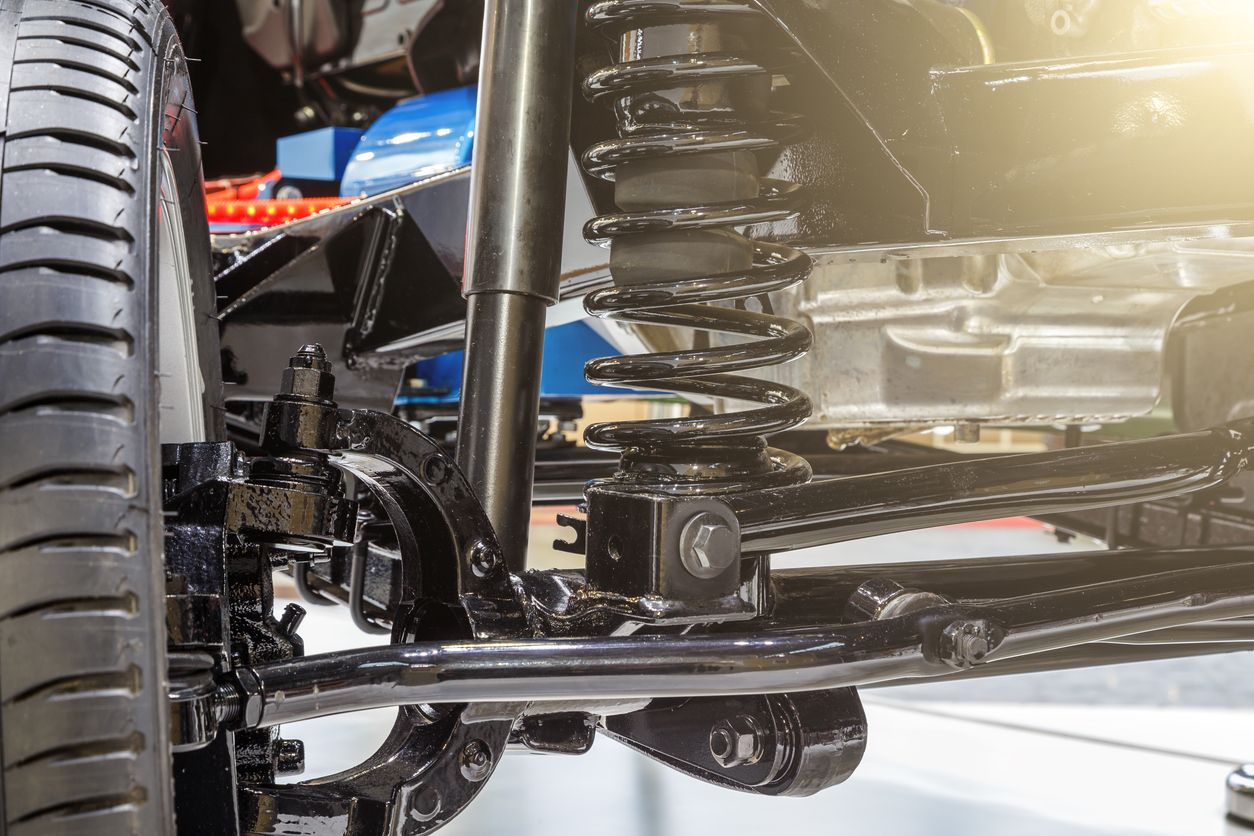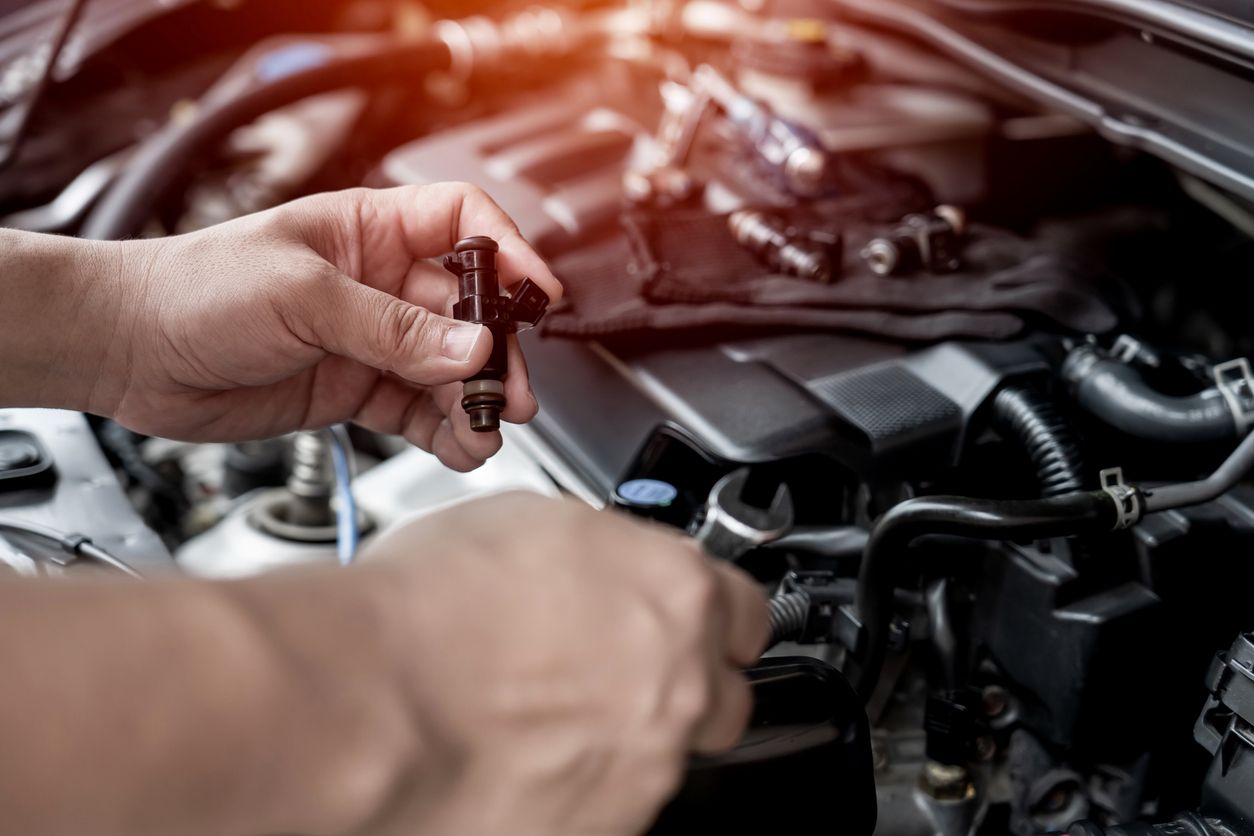Ever feel like your car is turning into a bouncy, unpredictable carnival ride? That’s probably your suspension screaming for help. The suspension system is what keeps your drive smooth and your steering under control. But over time, it takes a beating from potholes, rough roads, and plain ole' wear and tear.
Keep reading to discover what’s wrecking your suspension, the warning signs you shouldn’t ignore, and how to keep your ride smooth and safe.
What Causes Suspension Problems In a Car?
If your car's suspension is bad, it can cause all sorts of issues — from bumpy rides and uneven tire wear to poor handling and dangerous driving conditions. But what causes suspension damage in the first place?
While suspension damage can come from all sorts of everyday driving scenarios, here are the primary suspects of bounce-house-adjacent vehicles:
1. Potholes and Road Hazards
Ever hit a pothole so hard it made your soul leave your body for a second? Yeah, your suspension felt that too. Hitting potholes or other road debris can generate enough force to misalign, bend, or break crucial suspension components like struts, control arms, tie rod ends, etc.
2. General Wear and Tear
Nothing lasts forever, and your suspension components are no exception. Over time, shocks and struts lose their ability to absorb impacts, ball joints wear, and bushings break down — leading to handling problems.
3. Overloaded Vehicles
Your vehicle’s suspension system is designed to carry a certain amount of weight. If you’re constantly overloading your vehicle (towing trailers, hauling pallets of pavers, etc.), you’re putting extra strain on the shocks, springs, and other suspension parts, which can lead to premature failure.
4. Poor Maintenance
Suspension issues don’t always happen overnight, and neglect is often what causes suspension problems. Keeping an eye on fluid leaks, alignment, and general health can save you a lot of trouble (and cash) in the long run. So, regular inspections are crucial to catching minor problems before they become costly replacements or repairs.
Symptoms of Bad Car Suspension
If you’ve ever ignored a weird clunking noise or brushed off that extra bounciness after hitting a bump in the road, you might already be dealing with a suspension issue without realizing it. Here are some common signs your car’s suspension system needs some TLC:
- Bumpy Rides: Excessive bouncing means your vehicle’s suspension isn’t absorbing impacts like it should. So, if it feels like you’re driving a baby jumper, even on smooth roads, your shocks or struts may be worn out.
- Sloppy Steering or Pulling to One Side: Does your car have a mind of its own, drifting to the left or right, wandering wherever it pleases even when you’re holding the steering wheel? While this could be due to a simple alignment issue, it could also be due to a failed suspension component, like a ball joint or a control arm bushing.
- Diving or Squatting: If your vehicle’s front end nose dives when you brake or the rear sags when you accelerate, it’s typically a sign that your shocks and struts aren’t damping forces as they should.
- Uneven Tire Wear: Worn-out suspension components and bad alignments can cause tires to wear down unevenly, affecting vehicle handling and shortening the lifespan of your tires.
- Clunking or Knocking Noises: Does your car make weird noises when driving over bumps? If so, it could be due to excessive wear and slop in your ball joints, control arms, or other suspension parts.
How to Help Prevent Suspension Problems
The good news? You can take these steps to potentially help keep your suspension in tip-top shape and avoid costly repairs:
- Avoid Potholes: When possible, dodge those pesky road pockmarks. When potholes are unavoidable, slowing down before hitting them can minimize damage. If you think that a pothole damaged your suspension, stop by Tires Plus for pothole damage repair before the issue has a chance to get worse.
- Stick to Routine Maintenance: An ounce of prevention is worth a pound of cure, and the same can be said about proper suspension maintenance — regular suspension inspections and alignment checks help catch problems early.
- Don’t Ignore the Warning Signs: Driving with a broken or damaged suspension component can be dangerous for you and other drivers. So, if your car feels off or you notice one of the signs of suspension damage we covered earlier, make sure to get a suspension inspection as soon as possible.
Trust Tires Plus to Keep Your Ride Smooth
Keep your suspension in top condition! Visit your local Tires Plus for a professional inspection, knowledgeable advice, or expert repairs to ensure a smoother, safer ride. Schedule your appointment today.
Suspension Issues: FAQ
How Do I Know If My Struts Are Bad?
Struts — often confused with shocks, play a crucial role in your suspension system. They help dampen road impacts, control rebounds, and stabilize your ride. If they go bad, you’ll probably see some hydraulic fluid leaking from their body, excessive bouncing, unstable handling, and clunking or clicking sounds when you go over bumps.
What Happens if My Shocks Are Bad?
If your shock absorbers are bad, you’ll likely notice many of the same symptoms bad struts exhibit. If every small bump feels like a crater, your vehicle sways like a ship on high tides, or fluid leaks from the shock body, you’re probably dealing with failed shocks.
How Can I Identify Faulty Control Arms?
Your control arms connect your vehicle’s front wheels, and sometimes the rear wheels depending on the vehicle’s suspension type, to its frame while enabling vertical movement. If your control arms go bad, your car may pull to one side while driving, your steering wheel may shake or vibrate (especially at high speeds), and you may notice clunking sounds when driving over bumps.
What are the Signs of Failing Ball Joints?
Ball joints are a suspension component that connects your vehicle’s steering knuckle to the control arms. Much like a human hip joint, ball joints enable proper rotation of your wheels while also allowing them to move up and down with variations in the road. If your ball joints fail, you may notice popping or clunking noises, uneven tire wear, and wobbly steering.


